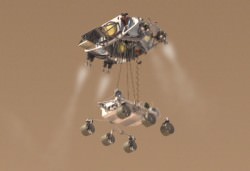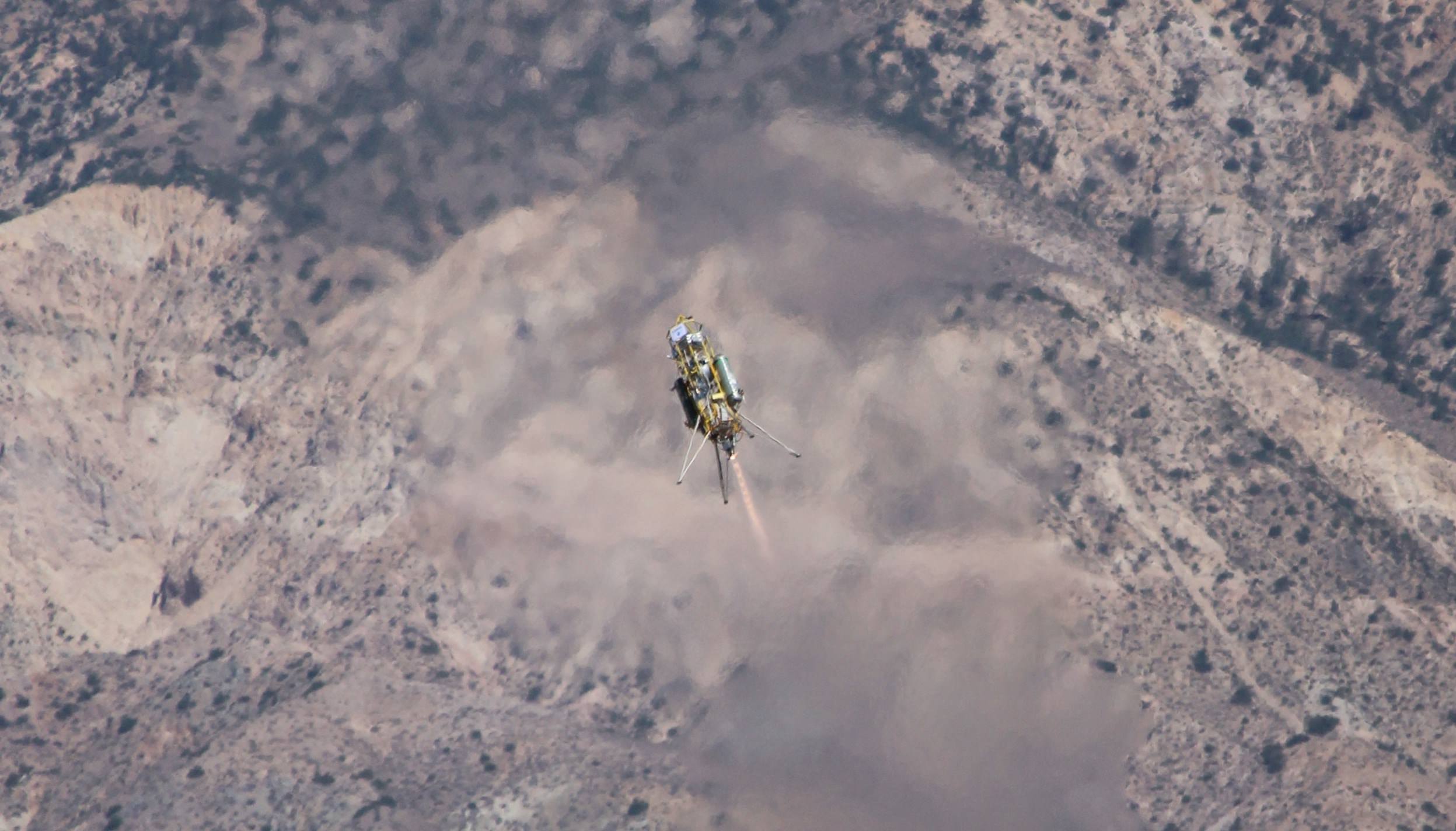It’s frustrating to make it all the way to Mars, only to land in the wrong spot. So as Masten Space Systems tests its Xombie vertical-launch-vertical-landing rocket prototype on Earth, engineers are also examining a software solution to make Red Planet landings even more precise.
The software is called G-FOLD (for Fuel Optimal Large Divert Guidance algorithm) and is a product of NASA’s Jet Propulsion Laboratory and other NASA departments. The agency is using techniques for spacecraft landings that have origins from the Apollo moon missions of the 1960s, which have some limitations.
“These algorithms do not optimize fuel usage and significantly limit how far the landing craft can be diverted during descent,” JPL stated, adding that the new algorithm can figure out the best fuel-conserving paths in real time, along with a “key new technology required for planetary pinpoint landing.”

Hitting the target exactly is an exciting feat for researchers, JPL explained, because robotic missions can be steered to difficult-to-reach science targets and crewed missions could bring more cargo to their landing site rather than carrying extra fuel.
Xombie first tested out this technique on July 30 and nailed the landing — about half a mile away — when it received the commands while 90 feet in the air. A second flight is planned for August, providing the data analysis goes as planned.
The technology is still new, of course, and there are other concepts out there for pinpoint systems. In May, the European Space Agency released information on a concept it is funding. That system, which is also still being developed, uses a database of landmarks to assist a spacecraft with making landings.
Source: NASA

